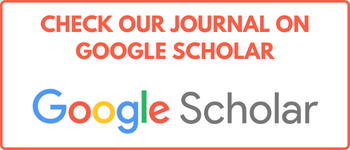This paper presents raw inferential statistical data to determine the effect of eWOM on public awareness of the adoption of electric vehicles. A survey was conducted in the Indian metropolis of Agra. Quantitative research methods are used to analyse data. After giving the structured questionnaire to respondents who owned electric vehicles, its validity and dependability were confirmed. Using Smart PLS software and structural equation modelling (SEM), data is presented. The relationship between the main constructions in the data is estimated using SEM path analysis. This dataset reveals a positive relationship between eWOM and the adoption of electric vehicles, as well as satisfaction with range-recharge, cost, government policies, and environmental concerns. However, RRS and CS have demonstrated a negative and insignificant effect on the awareness and efficacy of Electric car adoption.
Impact of eWOM on the Awareness for Adoption of Electric Cars: A Study of Agra City
Publication Information
Journal Title: Asian Journal of Multidisciplinary Research & Review
Author(s): Akanksha Pathak & Prof. Vijay Kumar Gangal
Published On: 12/12/2023
Volume: 4
Issue: 6
First Page: 70
Last Page: 84
ISSN: 2582-8088
Publisher: The Law Brigade Publisher
Cite this Article
Akanksha Pathak & Prof. Vijay Kumar Gangal, Impact of eWOM on the Awareness for Adoption of Electric Cars: A Study of Agra City, Volume 4 Issue 6, Asian Journal of Multidisciplinary Research & Review, 70-84, Published on 12/12/2023, Available at https://ajmrr.thelawbrigade.com/article/impact-of-ewom-on-the-awareness-for-adoption-of-electric-cars-a-study-of-agra-city/
Abstract
Share this research
Latest Publications

License Information
Copyright © [hfe_current_year]
Akanksha Pathak & Prof. Vijay Kumar Gangal

Ownership and Licensing:
Authors of this research paper submitted to the Journal of Science & Technology retain the copyright of their work while granting the journal certain rights. Authors maintain ownership of the copyright and have granted the journal a right of first publication. Simultaneously, authors agreed to license their research papers under the Creative Commons Attribution-NonCommercial-ShareAlike 4.0 International (CC BY-NC-SA 4.0) License.
License Permissions:
Under the CC BY-NC-SA 4.0 License, others are permitted to share and adapt the work, as long as proper attribution is given to the authors and acknowledgement is made of the initial publication in the Journal of Science & Technology. This license allows for the broad dissemination and utilization of research papers.
Additional Distribution Arrangements:
Authors are free to enter into separate contractual arrangements for the non-exclusive distribution of the journal’s published version of the work. This may include posting the work to institutional repositories, publishing it in journals or books, or other forms of dissemination. In such cases, authors are requested to acknowledge the initial publication of the work in the Journal of Science & Technology.
Online Posting:
Authors are encouraged to share their work online, including in institutional repositories, disciplinary repositories, or on their personal websites. This permission applies both prior to and during the submission process to the Journal of Science & Technology. Online sharing enhances the visibility and accessibility of the research papers.
Responsibility and Liability:
Authors are responsible for ensuring that their research papers do not infringe upon the copyright, privacy, or other rights of any third party. The Journal of Science & Technology and The Science Brigade Publishers disclaim any liability or responsibility for any copyright infringement or violation of third-party rights in the research papers.




